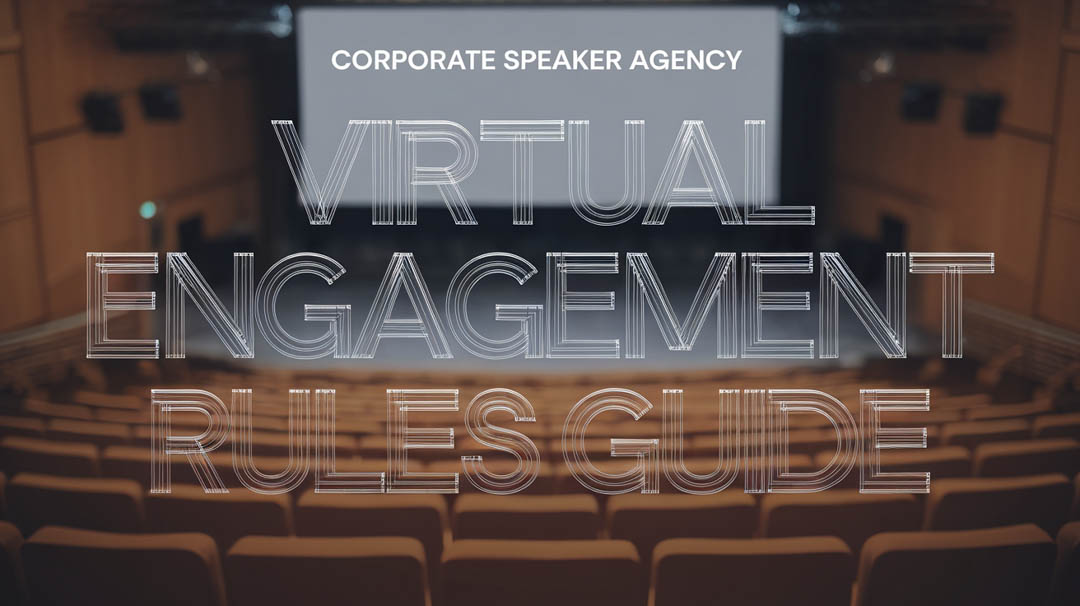You’ll need to master a new set of rules to thrive as a virtual speaker in today’s digital landscape. The traditional speaking playbook won’t cut it anymore – from technical setup to audience engagement, everything has changed. While you might excel at in-person presentations, the virtual stage demands different skills and strategies. Let’s explore how you can transform your speaking approach to captivate remote audiences and deliver measurable results in this evolving environment.
Technical Requirements for Successful Virtual Speaking
Three Key Technical Requirements:
- Quality Equipment: Use a good quality microphone and webcam to provide clear audio and visuals. A headset with a built-in microphone is ideal, and a tidy, non-distracting background is indispensable. A professional lapel microphone setup allows for natural movement while maintaining consistent audio quality.
- Reliable Software and Internet: Ensure your operating system and virtual meeting software are up-to-date, and conduct a test run to verify all elements are working smoothly. A stable internet connection is pivotal to avoid disruptions. Additionally, keeping software updated prevents compatibility issues with new software releases.
- Preparedness: Practice using the technology and software to be comfortable with its operation, and log in early to confirm all elements are ready and accessible.
Engaging Remote Audiences: Best Practices and Strategies
- Use Interactive Elements: Encourage audience participation with “show of hands” questions and other activities to boost engagement. Implementing interactive content tools has been shown to double audience engagement compared to static presentations.
- Craft Compelling Narratives: Start presentations with a story and maintain engaging content connected to the virtual event theme.
- Evoke Emotions: Infuse presentations with emotional and humorous components to engage the audience and make presentations memorable.
Virtual events can significantly reduce costs, with savings of up to 75% compared to in-person events.
Virtual Stage Presence and Body Language
When interacting with remote audiences, crafting engaging narratives and incorporating emotional and humorous components are just the beginning. Your virtual stage presence and body language also play a significant role in holding audience attention and conveying your message effectively.
To achieve this, consider the following best practices:
- Posture and Camera Angles: Maintain a professional posture and guarantee the camera captures your upper torso to include hand gestures and posture. This will also help avoid potential long-term physical issues by Supporting Proper Posture. Using industry-standard technical requirements ensures optimal camera positioning and lighting for professional-quality presentations.
- Non-Verbal Cues: Use nodding, tilting the head, and leaning forward to indicate active listening and engagement.
- Eye Contact: Look directly into the webcam to convey attention and respect, and dress professionally to project professionalism.
Time Management in the Digital Speaking Space
1. Meeting Overload: You’re likely attending one of the 11 million meetings held daily in the US, contributing to over 1 billion meetings per year. Virtual speaking experts like Todd Hunt are revolutionizing how these meetings are conducted through enhanced Zoom effectiveness.
2. Productivity Loss: Employee distractions and unproductive meetings cost businesses $588 billion and $37 billion annually, respectively.
3. Efficiency Gains: By tracking time effectively, you can reduce productivity leaks by 80% and boost revenue by 61%. Short meetings can maintain attention, which declines dramatically after 15 minutes. Implementing time management systems is crucial since 82% of people lack a time management system, highlighting a significant area for improvement.
Measuring Impact and ROI in Virtual Presentations
Measuring impact and ROI in virtual presentations is critical for organizations to gauge the effectiveness of their online events and make informed decisions about future investments. To do this, you need to track key metrics that align with your defined goals.
- Registration Numbers and Attendance Rates: Measure interest and actual participation levels to understand the value of your content.
- Audience Engagement: Gauge involvement through interactive elements like Q&A, chat, polls, and surveys to assess the engagement level of your audience.
- Lead Generation and Customer Satisfaction: Identify form submissions and post-event downloads, and gather feedback through surveys and polls to evaluate the impact on your sales pipeline and revenue generation.
Studies show that thought leaders consistently deliver higher ROI compared to headliner speakers, with a remarkable 45.7% better return on investment. A comprehensive view of virtual event performance is essential, incorporating insights that go beyond attendance numbers to reflect a holistic understanding of virtual event ROI.
Inspirational Goal-Setting Summit
An Inspirational Goal-Setting Summit offers organizations the perfect virtual platform to energize and motivate their teams toward achieving ambitious targets. You’ll want to select speakers from Corporate Speaker Agency’s roster who specialize in both motivation and practical goal-setting strategies, ensuring your virtual summit delivers maximum impact.
Consider booking a combination of leadership and motivational speakers who can engage your remote audience through interactive exercises, real-time polling, and breakout sessions. You can enhance the experience by incorporating virtual team-building activities between keynote sessions.
Through the agency’s expertise in virtual events, you’ll receive guidance on technical setup, audience engagement tools, and post-event analytics to measure your summit’s effectiveness. This format works especially well for companies with distributed teams across multiple time zones.
Client Liaison Team Connects
Corporate Speaker Agency’s dedicated client liaison team serves as your strategic partner in crafting successful virtual speaking engagements. They’ll work directly with you to understand your organization’s goals, audience demographics, and technical requirements for your online event.
Your assigned liaison will handle all aspects of speaker coordination, from initial selection through post-event follow-up. They’ll guarantee seamless communication between your team and the chosen speaker, coordinate technical rehearsals, and provide platform-specific best practices.
You’ll receive personalized support for virtual engagement tools, interactive elements, and audience participation strategies.
With their extensive experience in both traditional and virtual events, the liaison team can help you navigate common online challenges while maximizing speaker impact and audience connection in the digital space.
Final thoughts
You’ll find success in virtual speaking by mastering these new rules. From upgrading your tech setup to perfecting your virtual presence, each element plays a crucial role. Remember to keep your audience engaged through interactive tools, manage your time effectively, and track your impact through measurable metrics. When you follow these guidelines, you’ll deliver powerful virtual presentations that drive real results.

